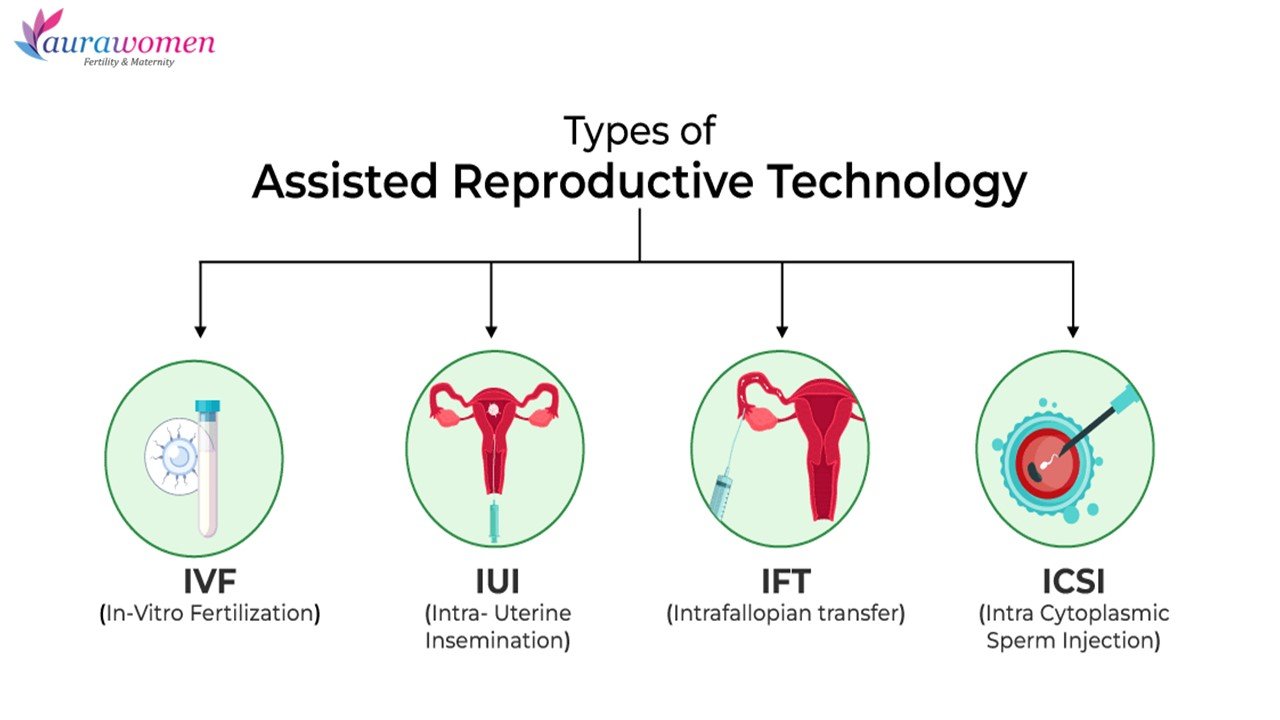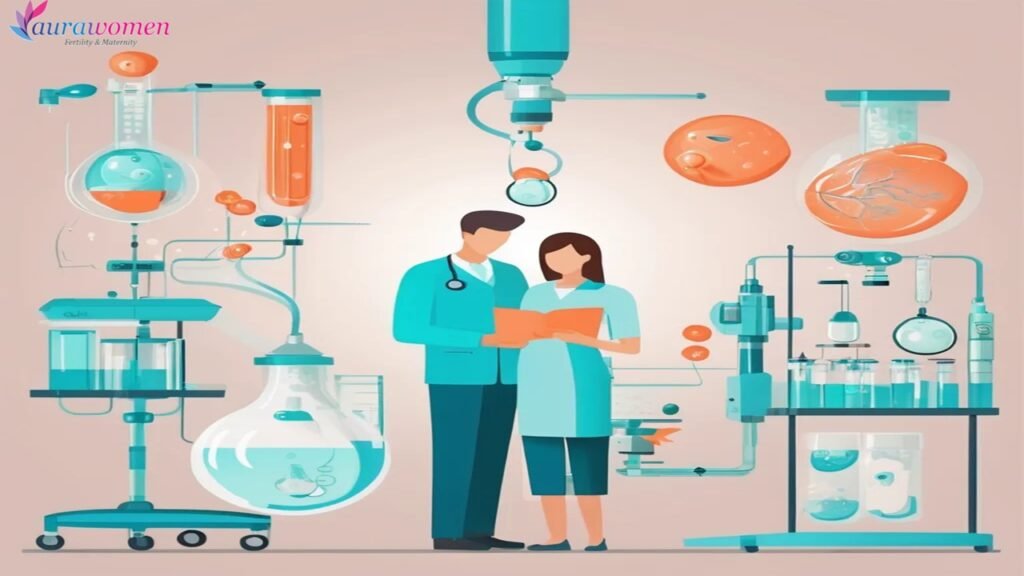
24 Aug Different Types of Assisted Reproductive Technology (ART)
Assisted reproductive technology, commonly referred to as ART, really has revolutionized the way that current treatment regarding infertility and related problems in reproduction are conducted. Today, by the advancement of science and medicine, couples or individuals have a myriad of choices in creating or expanding their families. This paper will cover various types of ART, outlining the process involved, benefits, and considerations.
What is ART?
ART stands for Assisted Reproductive Technology, which is a set of medical procedures that assist in the creation of an embryo and usually counteract infertility. The most famous form of this is In Vitro Fertilization, or IVF.. However, ART also embraces several other techniques. ART has, during the past few decades, made parenthood possible for millions across the globe.

Common Reasons for Using ART
Many are the reasons why one may resort to ART. One of the most common causes is infertility, which renders a fair percentage of the population childless. It may be age-related, acquired from some medically acquired conditions, or even unexplained in some; it proves to be a barrier to many couples. ART comes to the rescue for single people or same-sex couples to bring new life into this world. It can also be used to avoid the passing of some genetic disorders for a healthy pregnancy and child.
In Vitro Fertilization (IVF)
Probably, IVF is the most popularly known ART. The treatment involves the induction of multiple ovulations in a woman. After that, the eggs are retrieved, after which one is fertilized with sperm in the laboratory. The resulting embryos are monitored for some days before being transferred into the uterus of the woman. IVF has revolutionized the field of fertility treatment. It has achieved high success rates with time, though, not without efforts and price which include not only emotional struggle but also financial burdens.
Intracytoplasmic Sperm Injection (ICSI)
ICSI is a modified form of IVF, generally used in case of male infertility disorders, like low sperm count or poor sperm motility. A single sperm is injected into the egg for fertilization. This has enhanced considerably the success rate for couples with male infertility and is very much in vogue in fertility clinics.
Gamete Intrafallopian Transfer (GIFT)
Another technique of ART is GIFT: gamete intrafallopian transfer. Here, both the eggs and the sperm are transferred to a woman’s fallopian tubes where fertilization occurs naturally. As with IVF, fertilization is not done within the lab; with GIFT, it happens inside the body. Today, it is no longer very common but still can be an alternative for some couples who want to go for a slightly more natural process.
Zygote Intrafallopian Transfer (ZIFT)
ZIFT, though similar to the GIFT method, has the difference that in ZIFT, the fertilized egg or zygote is transferred into the fallopian tubes and not into the uterus. It combines both IVF and GIFT in such a way that fertilization can occur in the laboratory, but implantation occurs in the fallopian tube. Hence, ZIFT is usually opted for when there are blockages in the fallopian tubes or some other conditions whereby traditional IVF is not effective.
Donor Eggs and Sperm
Others may have to use donor eggs or sperm to conceive. This mostly happens when one of the partners has some medical condition that hurts either the quality or the count of his sperm or egg. Donor eggs and sperm therefore give them another chance at conceiving where otherwise it may not be possible. There are, however legal and ethical concerns to be taken into consideration, primarily those of the donor’s rights and those of the child’s.
Gestational Surrogacy
Gestational surrogacy is when another woman carries a pregnancy for someone. Following the creation of the embryo via IVF, it will then be inserted into the surrogate uterus. She will not be related to the child genetically since both the egg and sperm originate from the parents or other donors. Surrogacy can be very complicated; the legal implications vary in different countries and even states, but it does enable those who cannot carry a pregnancy themselves a means to become parents.
Preimplantation Genetic Diagnosis (PGD)
This is the technique applied in association with IVF to eliminate the possibility of some genetic disorder in the embryo before implantation into the uterus. This is mostly practiced in those couples who are at a high risk of some inherited condition. Among identified embryos, only those that are free of a particular genetic abnormality are selected and used for implantation; thus, giving maximum chances of a healthy pregnancy and minimizing the risk of genetic disorders in the offspring.
Frozen Embryo Transfer (FET)
FET is when, from an earlier IVF cycle, frozen embryos get thawed and transferred into the uterus. It allows couples to have repeated pregnancies with just one cycle of IVF, hence preventing repeated egg retrieval procedures. FET has gained significant popularity because of its convenience and better success rates obtained from frozen embryos.
Sperm and Egg Freezing
Sperm and egg freezing are options for people who want to retain fertility for later use. This might be for medical reasons, for example, cancer treatment, or due to social reasons like deferring parenthood. Here, it involves the collection of the sperm or egg at the peak time of fertility and subsequently freezing them to provide options for later conception.
Ethical Issues in ART
ART thus gives rise to a number of ethical questions related to the rights of the child, the use of donor gametes, and genetic screening. The more sophisticated the technologies available through ART, the more complex is the ethical landscape, debating the effect these technologies are having on society today, and the potential developments in the future, editing genes, for example.
Success Rates and Challenges in ART
Success rates of ART vary hugely, depending on the age, health, and the procedure being used. ART is not a guarantee, though it assisted millions of people. Challenges are huge, putting emotional stress, financial stress, and probably a number of attempts. Despite these odds, continuous research and progress in technology definitely would progress the outcome of ART procedures.
Conclusion:
It is in this light that assisted reproductive technology has opened up the possibilities for people and couples experiencing infertility or other related reproductive issues, expanding the choices from IVF to surrogacy and ever-growing. Looking forward into the future, it comes as no surprise that there is always going to be an increased reliance on ART for people to realize their dreams of becoming a parent.
Frequently Asked Questions
Which of the following is the most common form of ART?
In Vitro Fertilization, or IVF, is by far the most common and widely used type of ART.
What is the typical cost for ART?
Costs of ART vary tremendously depending on the type of procedure, the location, and the case. For example, in the United States, the cost of just one cycle of IVF can range from $10,000 to $15,000.
Are there any risks with ART?
Yes, there are risks: multiple pregnancies, ovarian hyperstimulation syndrome, and the emotional and financial toll of unsuccessful attempts.
Can ART help with genetic disorders?
Yes, ART procedures like Preimplantation Genetic Diagnosis can avoid the transmission of genetic disorders by screening the embryo before implantation.
How do I choose the right ART method for me?
The appropriate ART method will have to be chosen based on your case: health condition, fertility challenges, and personal preferences. The best way to find out what’s appropriate is to consult a fertility specialist.




No Comments